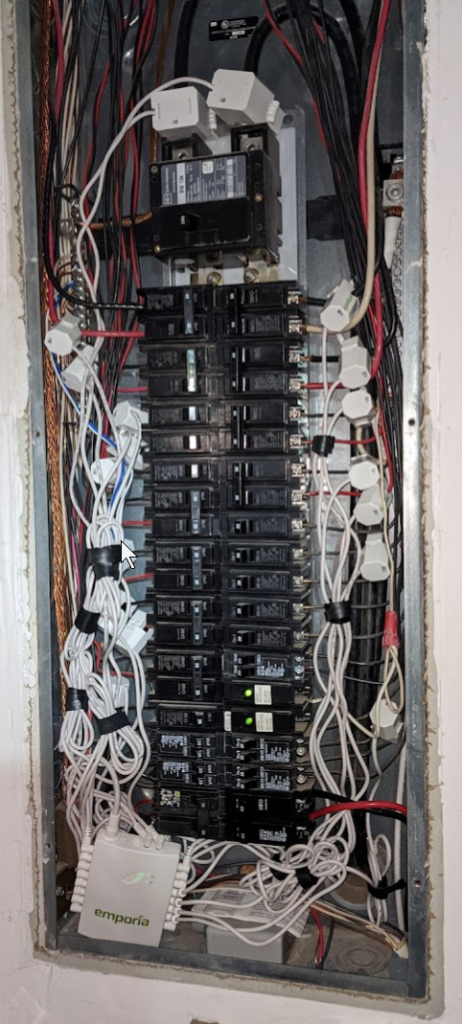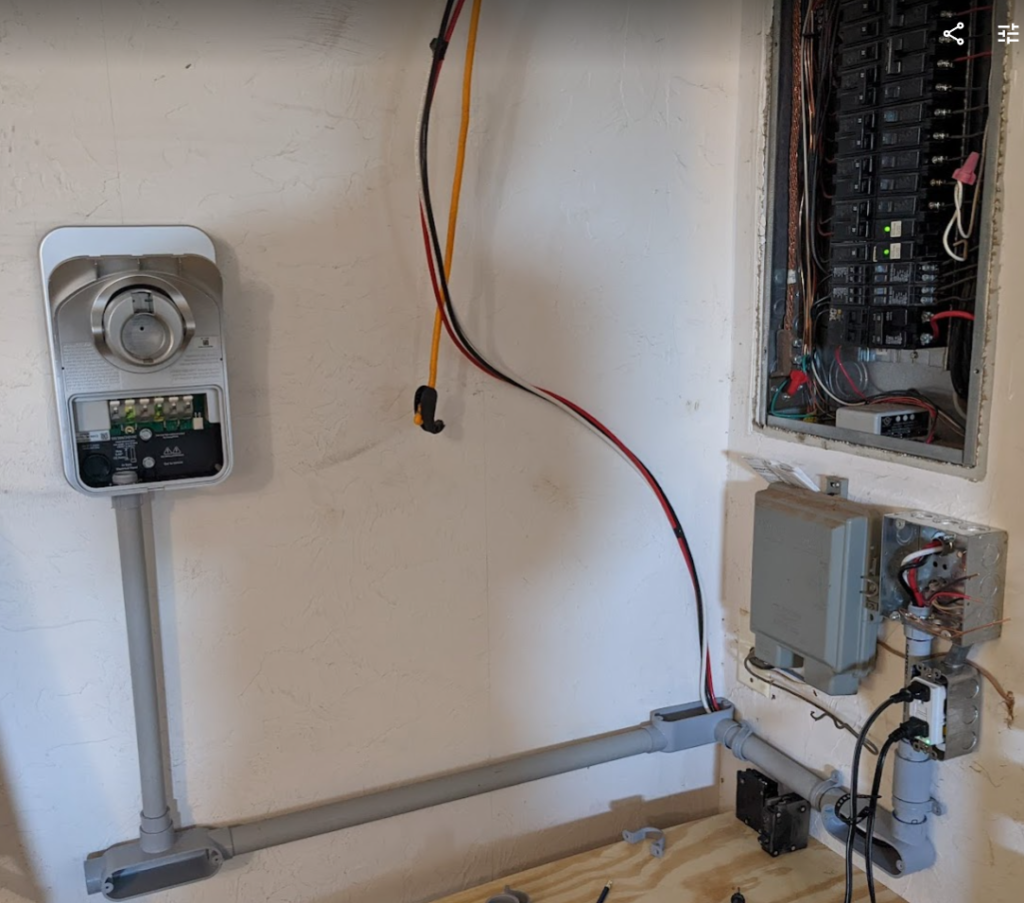While waiting on the car to be delivered I bought and installed the “Level 2” home charger. Because my breaker panel was full I had to buy some dual-slim breakers (basically two breakers in the space of one) and then I could add the 60-amp dual breaker necessary for the home charger. While doing all this I became concerned I could trip the main 100 amp breaker at the top of the load center so I also installed an Emporia “Emporia Smart Home Energy Monitor with 16 50A Circuit Level Sensors | Real Time Electricity Monitor/Meter | Solar/Net Metering”. My concerned was ‘what if the air conditioner and stove top and microwave are using power and I’m trying to charge the car”. My fears were unnecessary as everything only pulls about 1/2 the amperage it’s rated at and I can program the car to only charge after 9 PM. Again, the engineer in me it really excited to see the amperage per second for each breaker I put a sensor on! Neat stuff!
For the home charger I purchased “ChargePoint Home Flex Electric Vehicle (EV) Charger, 16 to 50 Amp, 240V, Level 2 WiFi Enabled NEMA 14-50 Plug or Hardwired, Indoor / Outdoor, 23-foot cable”. I removed it’s plug and hard wired it in with a 60 amp breaker (bottom right of this photo)

Below you can see how I hard wired the charger. Three wires for L1, L2 and Neutral, 6 AWG. Tough stuff – had to use 1″ PVC for most otherwise it would not have the needed bend radius.

All finished… The 220v 50A car charger, the 110v lawn mower battery chargers, an 220v air compressor power receptacle and a 110v regular receptacle near the garage door for convenience of plugging in a saw, drill, etc. The other grey box is southwestern bell’s demarcation box.

Math
<# useless info
I was surprised to find that the Kia Niro EV is 660 lbs heavier than the Kia Niro Hybrid.
Kia Niro EV, EX Premium min curb weight: 3,854 lbs
Kia Niro Hybrid, EX Premium min curb weight: 3,192 lbs. ( – 662 lbs)
#>
After driving the car in the city for the past month I’ve come up with the following statistics:
March 2022 (with OEM wheels)
156 miles to/from work from 80% charge to 10% battery remaining
OG&E Feb bill: $138.14/1246 kWh = 11 cents/kWh (this includes tax, etc) for off-season non-Smart-Hours plan. Note: During Smart-hours season if the evening rate is $0.08 cents/kWh then the cost is ever so slightly lower.
Kia documents show the battery energy is 64 kWh.
My ChargePoint shows I charged 52.75 kWh, so the cost was $ 5.84
That is about right, 52 kWh is 80% of 64 kWh.
My commute to/from work is exactly 30 miles/day or 19% of my mileage.
So 19% of my charge cost is $ 1.12 per day round trip.
Therefore I need to charge every 5 days if to/from work are my only trips.
NOTE: I am in Economy mode and I usually set cruse control to 70 mph when not stuck in heavy traffic.